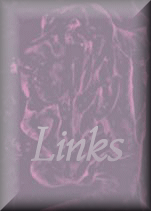

McWeb Software - WYSIWYG HTML Web page editor, Javascript effects and DHTML scripts

A Bloodhound (also known as the Chien de Saint-Hubert) is a large breed of dog. It is a scenthound famed for its ability to follow a scent many days old, over vast distances. This dog is often used as a police dog to track missing people, fleeing suspects, or escaped prisoners.
Appearance
Modern Bloodhounds weigh from 80 to 110 lb (36 to 50 kg) and stand 23 to 27 inches (58 to 69 cm) high at the withers. Bloodhounds now come in black and tan, liver and tan, or red. In the Middle Ages , they also occurred in other solid colors, including white (known as the Talbot Hound), but these no longer occur. The colors appear in other breeds descended from the early Bloodhounds, however.
Temperament
This breed is a mellow, cheerful, relaxed dog who is nonetheless tireless in slowly and steadily following a scent. Its laid-back attitude makes it somewhat difficult to obedience train. However, with the proper amount of time and effort, this can be achieved.
Bloodhounds are extremely loyal companions, and if seperated from their masters for long periods of time are known to mourn and stop feeding as a sign of distress. They make excellent family pets, but are not good with very small children because they accidently knock them over with the bulk of their size and tail.
Health
Like most large breeds, their life expectancy is only 10 to 12 years.
The Bloodhound is prone to hip dysplasia and bloat.
History
The ability to follow a scent has always been valued and superb scent trackers were developed separately in lowland Europe at the St. Hubert Monastery and in Britain. The Bloodhound was mentioned by Roman Emperor Marcus Aurelius in his history of the Roman Empire. This dog has been known as a breed since at least the Middle Ages and it is the oldest known breed of hound. Its excellent tracking skills were a target as it was used in the development--intentional or unintentional--of other fine tracking breeds such as the American Coonhound, Swiss Jura Hound, Bavarian Mountain Hound, and many others.
Miscellaneous
Scenting ability
Although all dogs can follow scents on the ground, in the air, and in water, the Bloodhound's physical characteristics make it well-known in its ability to follow a scent. Odors are picked up and identified by scent receptors in a dog's nasal chambers; the larger the chambers, the better chance the dog has of identifying even the smallest and least number of particles that provide a scent. The Bloodhound's nasal chambers are larger than most other breeds. It is believed that pendulous ears and moist, pendulous lips help to trap scent particles, further enhancing its scenting abilities.
Origin of name
The name "Bloodhound" comes from careful breeding in the middle ages, resulting in it being known by the 14th century as the "blooded hound" or Bloodhound, hound of noble ancestry.[1]
References
? (1970) David B. Guralnik Webster's New World Dictionary of the American Language, 2nd College Edition, World Publishing Company. LCC 70-105348.
Cunliffe, Juliette (2004). The Encyclopedia of Dog Breeds, Parragon Publishing. ISBN 0-75258-276-3.
Fogle, Bruce (2000). The New Encyclopedia of the Dog, Doring Kindersley (DK). ISBN 0-7894-6130-7.

